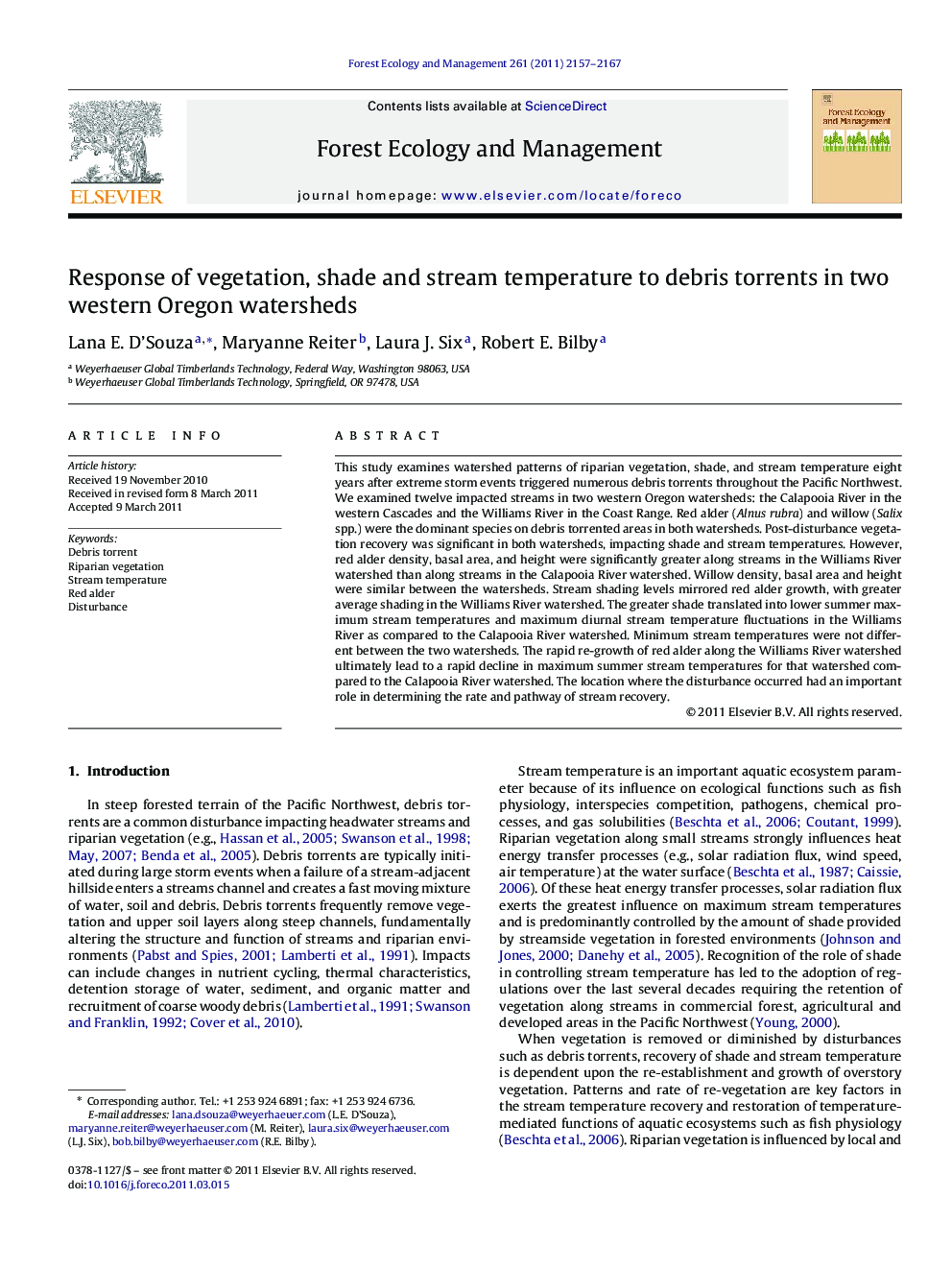| Article ID | Journal | Published Year | Pages | File Type |
|---|---|---|---|---|
| 87907 | Forest Ecology and Management | 2011 | 11 Pages |
This study examines watershed patterns of riparian vegetation, shade, and stream temperature eight years after extreme storm events triggered numerous debris torrents throughout the Pacific Northwest. We examined twelve impacted streams in two western Oregon watersheds: the Calapooia River in the western Cascades and the Williams River in the Coast Range. Red alder (Alnus rubra) and willow (Salix spp.) were the dominant species on debris torrented areas in both watersheds. Post-disturbance vegetation recovery was significant in both watersheds, impacting shade and stream temperatures. However, red alder density, basal area, and height were significantly greater along streams in the Williams River watershed than along streams in the Calapooia River watershed. Willow density, basal area and height were similar between the watersheds. Stream shading levels mirrored red alder growth, with greater average shading in the Williams River watershed. The greater shade translated into lower summer maximum stream temperatures and maximum diurnal stream temperature fluctuations in the Williams River as compared to the Calapooia River watershed. Minimum stream temperatures were not different between the two watersheds. The rapid re-growth of red alder along the Williams River watershed ultimately lead to a rapid decline in maximum summer stream temperatures for that watershed compared to the Calapooia River watershed. The location where the disturbance occurred had an important role in determining the rate and pathway of stream recovery.
► Red alder and willow species were primary colonizing species post-disturbance. ► Stream shading levels mirrored red alder growth. ► Increased shade was related to lower maximum stream temperatures. ► Vegetation recovery differed by watershed location.
